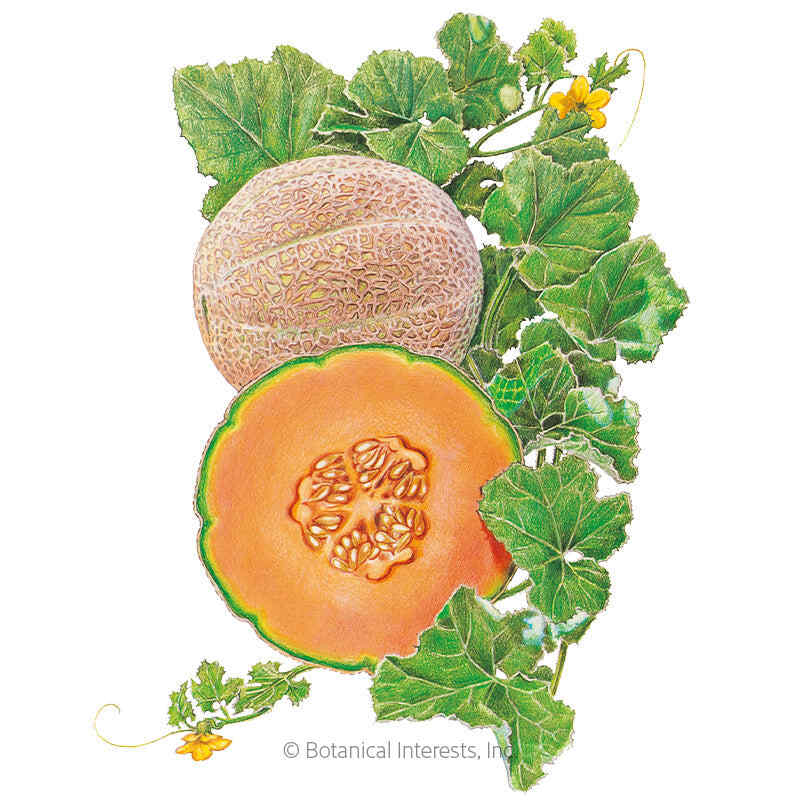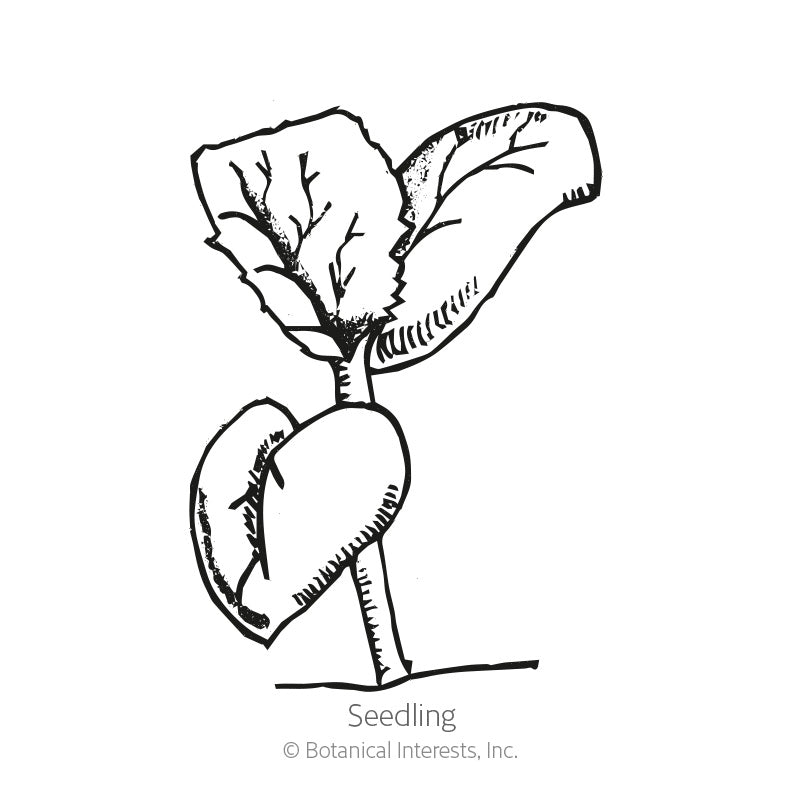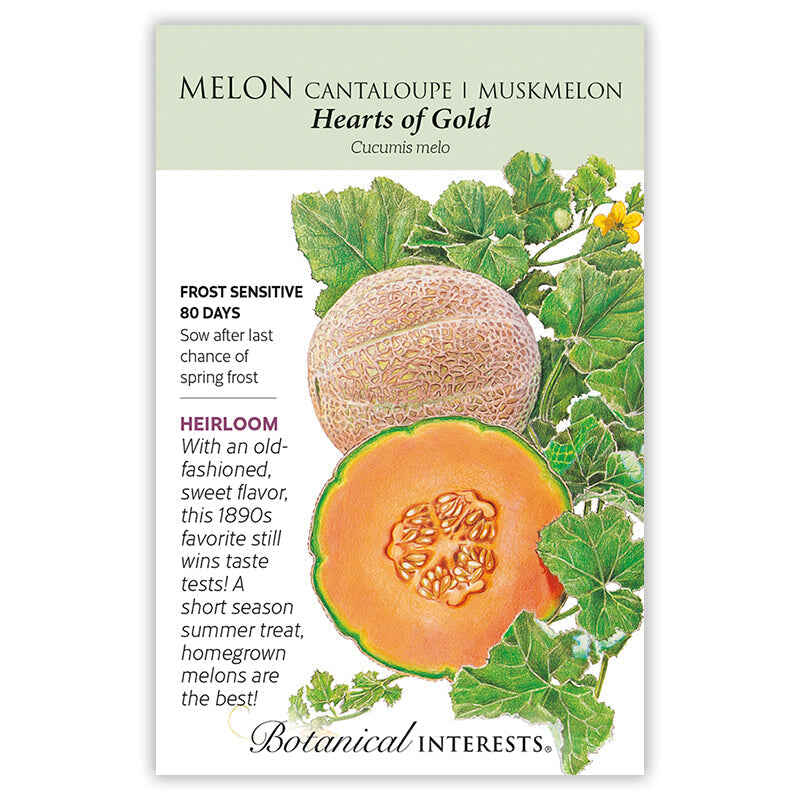- Variety Info
- Sowing Info
- Growing Info
- Learn More
Variety Info
Days to Maturity: 80 days
Family: Cucurbitaceae
Type: Cantaloupe (Learn more)
Native: Africa, Asia, Australia, West Pacific Islands
Hardiness: Frost-sensitive annual
Exposure: Full sun
Plant Dimensions: Sprawling vines average 6'.
Variety Info: Firm, juicy, and aromatic; up to 6" diameter, 3 pounds, with deep orange flesh. Skin is ribbed and heavily netted. Cross between 'Osage' and 'Nettedgem' from 1890.
Attributes: Frost Sensitive

Sowing Info
When to Sow Outside: RECOMMENDED. 1 to 2 weeks after your average last frost date, and when soil temperature is 70°–90°F.
When to Start Inside: Recommended for short-season areas. 2 to 4 weeks before transplanting within 2 weeks after your average last frost date. Sow into biodegradable pots that can be directly planted in the ground; roots are sensitive to disturbance.
Days to Emerge: 5–10 days
Seed Depth: ¼"
Seed Spacing: 2–3 seeds per mound
Row Spacing: 4'–6' apart
Thinning: Thin to 1 plant per mound
Your hardiness zone is
Growing Info
Harvesting: Harvesting at the right time is very important with melons. Commercial growers harvest before melons are ripe, forcing them to ripen off the vine, but the last few days of ripening on the vine put a lot of sugars into the melon. Consequently, melons taste significantly better when vine ripened. How do you know when melons are ripe? Use these indicators: 1) The color between the surface netting is brown, not green. 2) A ripe melon will have a pleasant, fruity aroma at the blossom end. 3) A crack will form on the stem right near the point of attachment. This is called the "slip stage" and in a few days, the melon will detach from the vine with little effort and pressure. If it is somewhat difficult to detach the fruit from the vine, the melon is not ready yet. Do not allow to over-ripen.







